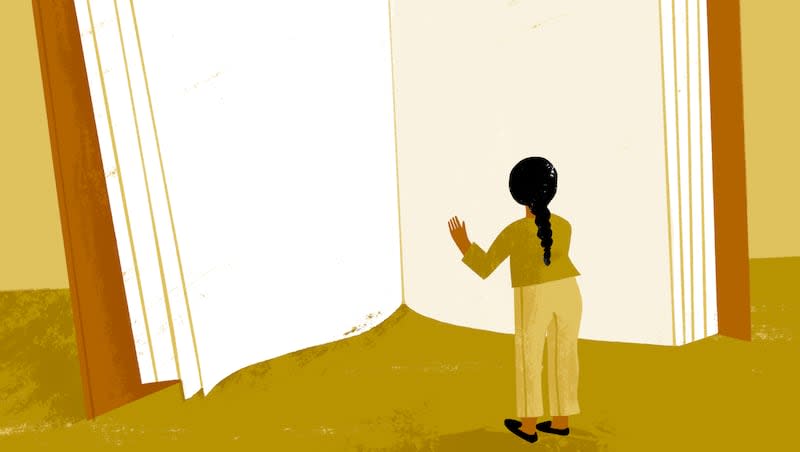Reading paper books leads to better text comprehension — but how?

In December 2023, the University of Valencia published research showing that reading paper books results in six to eight times better comprehension than reading e-books. Over 450,000 people participated in the study.
Cristina Vargas and Ladislao Salmerón from the Educational Psychology department explained in a University of Valencia newsletter, “If a student spends 10 hours reading books on paper, their comprehension will probably be 6 to 8 times greater than if they read on digital devices for the same amount of time.”
While it may seem counterintuitive, researching online had “minimal associations with text comprehension.” The research also showed that text comprehension increases across all demographics with age.
Teenagers who read paper books are much more likely to have academic success compared to their peers who don’t, according to a study conducted by the Organization for Economic Cooperation and Development.
The study added that regardless of socioeconomic background, teenagers who “most often read paper books” scored nearly 50 points above non-readers on the PISA (international testing) across 30 countries. This higher score is equivalent to “almost 2.5 years of learning.”
Is it better to read paper books?
A study published in the Educational Research Review in 2018 found three reasons why comprehension is better when reading paper books.
1. Paper books provide a better time frame for comprehension
The study explained, “The paper-based reading advantage increased in time-constrained reading compared to self-paced reading.”
Reading for the purpose of comprehension comes in virtually any form: studying for exams, researching for work, looking for information on medical, mental or social issues, and more.
Paper books are better for this type of time-constrained comprehension, as they limit distractions and cognitive overload, offer tangibility and spatial awareness, and allow for pen-and-paper annotations.
The internet’s close proximity to reading e-books makes staying focused difficult. Notifications and pop-up ads pull the reader away from their reading. Even if these distractions are only temporary, their influence is harmful to text comprehension.
Harvard Business Review conducted a study on how much time the average American spends toggling between tabs and apps and how task-switching influences the brain and productivity. When measuring how long toggling took the average user, researchers found one switch took slightly over two seconds. They also found that “the average user in the dataset toggled between different apps and websites nearly 1,200 times each day.”
In one day, each participant spent roughly four hours simply switching tasks, and over the course of a year, HBR predicted this would be equivalent to five work weeks.
2. It’s harder to get distracted when you read a physical book
Paper books make it harder for websites to lure you in and distract you from the content your brain is working to comprehend.
Not only do e-books make the user more prone to task-switching, e-book reading itself is less thorough.
“Screen-based reading behavior is characterized by more time spent on browsing and scanning, keyword spotting, one-time reading, non-linear reading, and reading more selectively,” Ziming Liu, a professor of library and information science at San Jose University, explained.
3. Paper books make digesting informational texts easier
Text genre has a large impact on whether reading on paper or reading e-books influences comprehension.
The study compared comprehension levels of different genres depending on the reading mode. Participants had much higher comprehension of informational texts and informational texts with aspects of narrative than books strictly based on narration.
The study found no difference in comprehension for strictly narrative genres.
The physicality of a text helps the brain retain information: “The haptic feedback of a touch screen is different from a paper book, and the implications of such interactions warrant empirical investigations,” Anne Mangen, professor of reading science at the University of Stavanger, wrote in a 2016 study.
Being able to touch, flip through pages and mark the paper help the brain build mental representations of the text’s content.
An article published in Scientific American explained how the brain perceives words as a “tangible part of the physical world.” Reading requires several areas of the brain that deal with aural language, sight and motor coordination.
The brain perceives words as physical objects. Scans of the brain show that when someone processes a word, it activates mainly the visual areas of the brain, according to research published in “Discovering the Brain” by science writer Sandra Ackerman.
The Scientific American’s research described reading paper books as similarly physical. A physical book orients the reader in two directions: backward and forward. It also allows the brain to build mental maps ranging from chronology to topography.
Educational psychologist Ernst Rothkopf explained, “Both scholarly evidence and anecdotal experience testify that when people try to locate a particular piece of information they have read, they often are able to recall where in the text it appeared, such as a limerick on the top of a right-hand page.”

